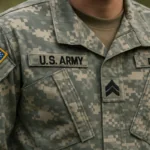Tasers offer a non-lethal option for incapacitating individuals from a distance. Their effective range and the technology behind them make them a valuable tool for law enforcement, ensuring safety while minimizing harm. In this article, I will share some important details about this device, along with its reach.
What is Its Maximum Reach?
Tasers are designed to incapacitate individuals from a distance, offering law enforcement a non-lethal alternative to firearms. The maximum reach of a Taser is a crucial factor in its effectiveness, allowing officers to maintain a safe distance from potential threats.
Also, check out how powerful these weapons are.
The range of a Taser depends on the model and the technology it employs. Generally, Tasers can shoot their probes up to distances of approximately 11 meters (35 feet), though some models, like the Taser 7, boast ranges up to 25 feet. This range is determined by the length of the wires connected to the probes, which are propelled towards the target using compressed nitrogen.
The maximum reach of a Taser is significant for several reasons. It ensures the safety of law enforcement officers by allowing them to subdue suspects from a distance, reducing the risk of physical confrontation. Additionally, the range provides a tactical advantage, enabling officers to control situations without resorting to lethal force.
| Taser Model | Maximum Range (feet) | Propulsion Method |
|---|---|---|
| Standard Taser | 35 | Compressed Nitrogen |
| Taser 7 | 25 | Compressed Nitrogen |
How Tasers Work?
Tasers operate by delivering a high-voltage, low-amperage electrical charge through wires to probes that attach to the target. This electrical charge disrupts the normal function of the muscles, causing temporary incapacitation without causing significant long-term harm.
The Mechanism of Action
When a Taser is deployed, it fires two small darts connected to the device by thin wires. Upon making contact with the target, the device delivers a series of electrical pulses that interfere with the body’s neuromuscular system. This interference causes an uncontrollable contraction of the muscle tissue, rendering the target temporarily unable to move or function normally.
Safety and Effectiveness
Tasers are designed to be a safer alternative to firearms, aiming to incapacitate rather than cause permanent harm. The electrical charge delivered by a Taser is carefully calibrated to achieve the desired effect without causing lasting damage.
Studies and operational use have shown that when used properly, Tasers are an effective means of non-lethal force, providing law enforcement with a critical tool for managing dangerous situations.
“Advances in less-lethal technology offer the promise of more effective control over resistive suspects with fewer serious injuries. Pepper spray was among the first of these newer, less-lethal weapons to achieve widespread adoption by police forces. More recently, conducted energy devices (CEDs), such as the Taser, have become popular.”
Popular Taser Models and Their Range
Tasers come in various models, each designed to meet specific operational needs. Two of the most widely recognized models are the Taser X26P and the Taser 7. These devices are integral to law enforcement agencies worldwide, providing a reliable means of incapacitation with a focus on safety and effectiveness.
Taser X26P
The Taser X26P is a continuation of the legacy X26 model, known for its compact size and reliability. It has a maximum effective range of 15 to 25 feet, depending on cartridge type. This model is favored for its balance between performance and ease of use, making it a standard issue in many law enforcement agencies.
Taser 7
The Taser 7 is the latest advancement in Taser technology, offering improved accuracy, faster reload times, and a range of up to 25 feet. This model represents a significant leap forward, with enhancements designed to increase effectiveness in real-world situations. The Taser 7’s design focuses on ensuring that each deployment has the maximum potential to safely incapacitate a subject.
| Model | Range (feet) | Features |
|---|---|---|
| X26P | 15-25 | Compact, reliable, widely used |
| Taser 7 | Up to 25 | Improved accuracy, faster reloads, enhanced safety |
Factors Affecting Taser Range
The effective range of a Taser is influenced by several factors. Understanding these can help in assessing the situation and choosing the most appropriate model and tactics for deployment.
Distance Between Probes
The distance between the two probes when they hit the target can affect the Taser’s effectiveness. Ideally, the probes should spread apart as they travel towards the target, increasing the likelihood of effective incapacitation. The optimal spread is achieved at certain distances, which are taken into account in the design of each Taser model.
Environmental Conditions
Wind, rain, and other environmental conditions can impact the trajectory of the probes and, consequently, the effective range of a Taser. Officers need to consider these factors when deciding to deploy a Taser, especially in outdoor situations where weather can be unpredictable.
Target Movement
The movement of the target can also affect the Taser’s range. A moving target can increase the difficulty of achieving an effective probe spread, potentially requiring closer engagement.
Clothing and Obstacles
The type of clothing and any obstacles between the Taser and the target can influence the effectiveness of the probes. Thick clothing may impede the probes’ ability to penetrate and deliver the electrical charge effectively, while obstacles can block or deflect the probes.
Safety Considerations and Usage Guidelines
Tasers, while designed as non-lethal tools, carry inherent risks that necessitate strict safety protocols and usage guidelines. Law enforcement agencies emphasize training and adherence to best practices to minimize potential harm to both the operator and the subject.
Training and Certification
Officers are required to undergo comprehensive training that covers the operational use of Tasers, including understanding their range, deployment techniques, and the physiological effects on the human body. Certification programs ensure that only qualified personnel are authorized to carry and use these devices.
Deployment Guidelines
Guidelines for Taser use are established to ensure they are deployed only when necessary and in a manner that minimizes risk. These include assessing the situation to determine if the use of a Taser is appropriate, aiming for lower-mass muscle areas to reduce complications, and avoiding multiple or prolonged exposures.
Medical Considerations
Understanding the medical implications of Taser use is crucial. While generally considered safe, there are circumstances where deploying a Taser could pose significant health risks, such as on individuals with pre-existing medical conditions or when hit in sensitive areas of the body.
Post-Deployment Procedures
After a Taser has been deployed, officers are trained to follow specific procedures, including providing immediate medical evaluation to the subject. This ensures any potential adverse effects are promptly addressed.
Alternatives to Tasers
While Tasers are a popular choice for non-lethal force, several alternatives exist, each with its own set of advantages and limitations. Understanding these options allows law enforcement to choose the most appropriate tool for a given situation.
Stun Guns
Stun guns, unlike Tasers, require direct contact to deliver an electric shock. They are effective at close range and can be used to subdue a subject without the need for projectiles.
Pepper Spray
Pepper spray offers a non-contact alternative that incapacitates by causing temporary blindness and difficulty breathing. It’s useful for controlling individuals or crowds from a distance.
Baton
The baton is a traditional tool for law enforcement, useful for defense and compliance techniques. Its effectiveness depends on close proximity and the skill of the officer.
| Tool | Contact Required | Effectiveness Range | Primary Effect |
|---|---|---|---|
| Stun Guns | Yes | Close Range | Electric shock to subdue |
| Pepper Spray | No | Several feet | Causes temporary blindness and difficulty breathing |
| Baton | Yes | Close Range | Used for defense and compliance |
FAQs
What’s the difference between a stun gun and a Taser?
A stun gun is a device that delivers an electric shock to a person by direct contact, while a Taser is a device that fires two barbed darts attached to wires that deliver an electric shock from a distance. A stun gun is cheaper and easier to use, but a Taser is more effective and has a longer range.
Do TASERs work through clothes?
Yes, TASERs can work through clothes, depending on the thickness and type of fabric. The barbed darts can penetrate clothing and pierce the skin, causing a quick connection. However, some materials, such as leather or thick layers, may reduce the effectiveness of the TASER.
What can 50 000 volts do to a person?
50 000 volts from a TASER can cause intense pain and muscle contractions that can incapacitate a person for several seconds. According to a study, 50 000 volts can also impair cognitive functioning and memory for a short period of time, which may affect a person’s ability to give reliable statements.
What does being tased feel like?
Being tased feels like a severe cramp that affects the whole body. A person who is tased may lose control of their muscles and fall to the ground. Some people describe the sensation as being stung by bees, having a fire in their veins, or being electrocuted.
How many volts is the strongest taser?
The strongest TASER available for civilian use is the TASER Pulse+, which delivers 50 000 volts of electricity. However, the voltage is not the only factor that determines the strength of a TASER. The current, duration, and frequency of the pulses also affect the impact of the TASER on the body.
Summary
While Tasers are a widely used non-lethal tool by law enforcement, understanding the range of alternatives available is crucial. Each option, from stun guns and pepper spray to batons, offers distinct advantages and limitations. Choosing the most appropriate tool requires careful consideration of the situation, ensuring the safety and effectiveness of law enforcement interventions while minimizing harm to all involved.












